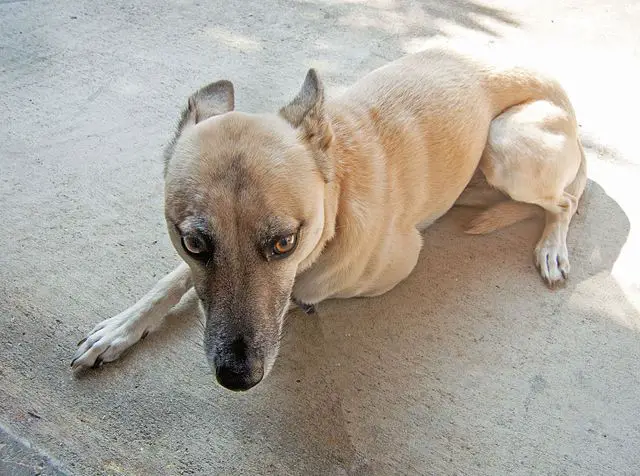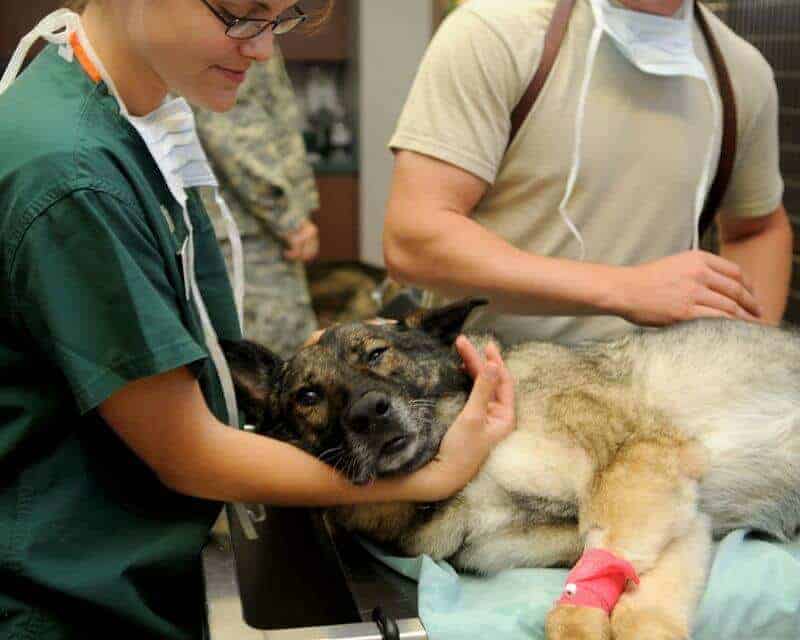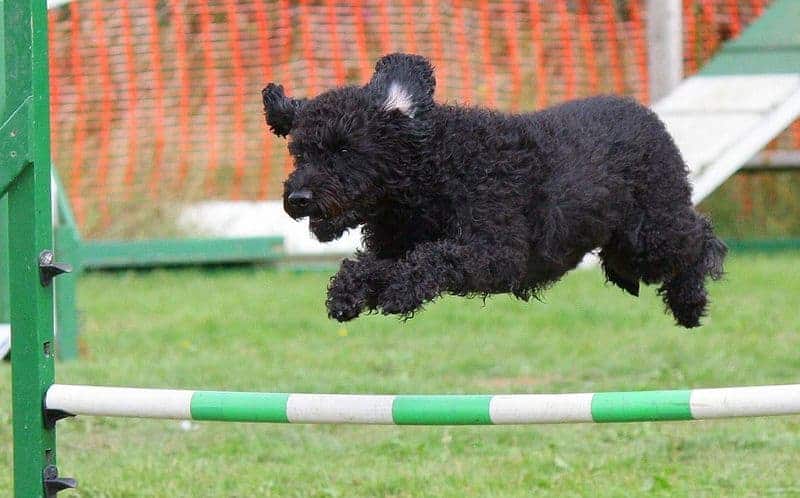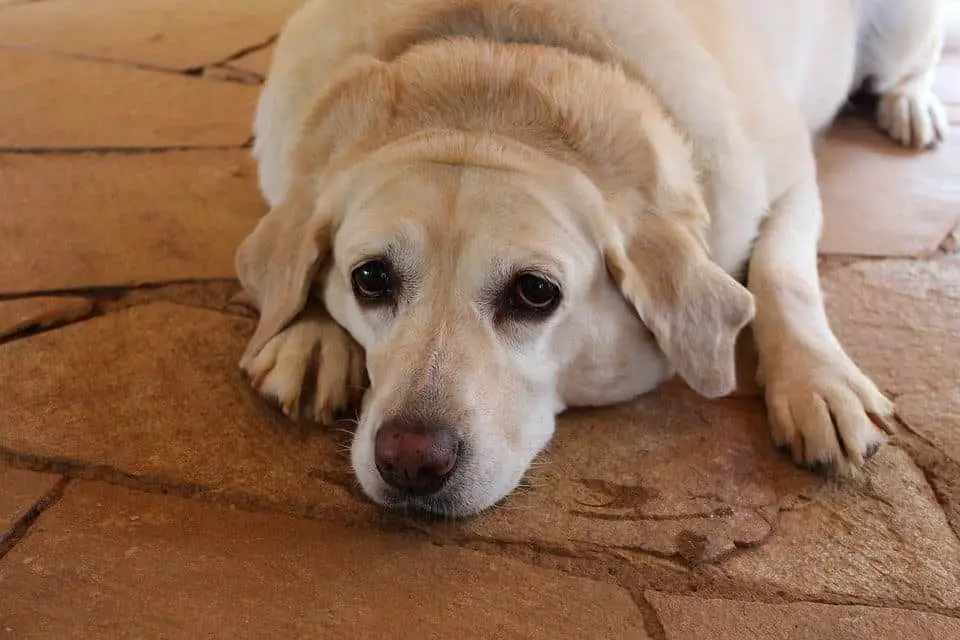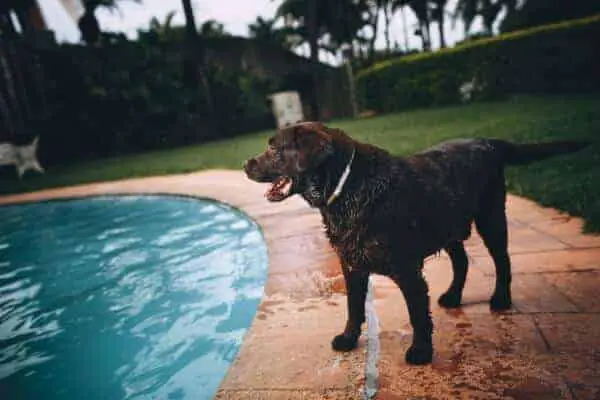Dog fights can be terrifying. An unfortunate danger when you take your dog out in public, dog fights can occur at any time for a variety of reasons, many of which are out of the owner’s control. Even though you may never need these skills, if you own a dog, you should learn how to stop a dog fight.
The best thing to do if you encounter a fight is to stay out of it, especially if the dogs involved are larger breeds. When dogs are in a fighting frenzy, they can cause severe injuries, including death, without even realizing they’re causing these injuries to a human being.
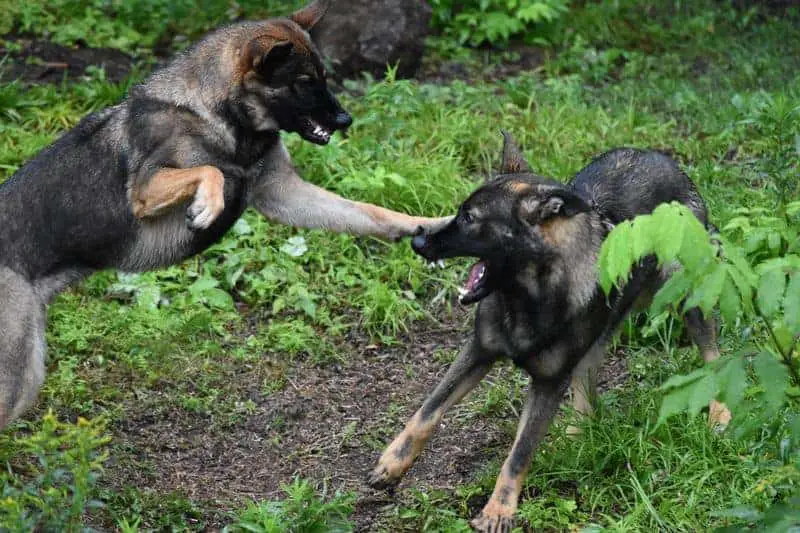
Even if your dog is normally docile and obedient, when he’s fighting another dog, he’s a totally different dog, in full survival mood, filled with fight drive. If you involve yourself in the fight, your dog won’t recognize you as his owner, but as another aggressor. At the very least, you’ll be badly bitten.
If you must break up a fight, try to get someone to help you. Unless you have a lot of experience with animal behavior, training and aggression, there’s a strong chance that you’ll be injured.
Never forget that any breed of dog can injure you, not only large-breed dogs like German Shepherd, Golden Retrievers, Rottweilers and Pitbulls. Dachshunds, for example, can do a great deal of damage, albeit to your lower half. Don’t assume large bully breeds are going to have dog aggression, and don’t discount the smaller dogs.
What Not to Do
The worst thing you can do in a dog fight is to get between the two dogs. Although there’s a chance that your dog will stop if you tell him to, the other dog probably won’t. If you are in the middle of them, you’ll get bitten or attacked. Never rush in quickly, grab the dogs and try to pull them apart. They’ll turn on you, just as they would if you got in the middle of the fight.
Likewise, keep your arms and legs out of the fight. You might be tempted to grab the dog by the collar or neck, or kick the dogs apart, but in doing so, you’re giving them a convenient limb to bite or latch onto.
The Safest Way to Break Up a Dog Fight
The safest way to break up a dogfight is with two people. Each person focuses on one dog, grabbing the back feet or legs. With their legs in the air, they won’t be able to continue fighting. Pull the dogs apart, continuing to hold their legs. Back slowly away from the other dog, swinging the dog you’re holding in a circle or wide arc, so he can’t reach you to bite you. He’ll have to walk on his front legs only, so he’ll slow down once he realizes it isn’t going to work. This might be difficult with unusually large or powerful dogs.
Once you’ve separated the dogs and backed them away from one another, preferably away from one another’s sight, they should begin to calm down. Only try to leash them when their body language indicates their fight fury has subsided.
Make sure to keep the dogs far apart, and don’t release them. If they do break free, they’ll begin fighting again, often with increased vigor.
Breaking Up a Dog Fight When You’re Alone
If you are alone when a dog fight starts, you need to proceed very carefully as things could turn deadly very quickly. Stay calm and focus on the job at hand: breaking up the fight without getting bitten.
If the fight isn’t serious, try making a loud noise or squirting the dogs with a water bottle or hose. If this doesn’t work, then get ready to take control of the situation.
If you don’t have a leash with you, go get one. The dogs will continue to fight as you do this, but you need to take steps to ensure your personal safety. Approach one of the dogs quietly; if they’re locked on one another, they may not even notice you. When you’re close enough, quickly loop the leash around the back end of the dog, slip the free end through the leash’s looped handle and pull the leash taut. Back away, pulling the dog, until you reach something you can tie the dog to, such as a telephone pole or a fence post.
Now it’s time to deal with the other dog. Once the first dog is secure, approach the second dog from behind, grabbing him by the hind legs and pulling him away, using the same techniques you’d use if there were two people breaking up the fight. Drag the dog to a crate or another room and secure him. If you aren’t at home, leash him and tie him to something far away from where the first dog is tied.
Understanding Dominance
Just like people, dogs fight for a number of reasons, but the most common one has to do with dominance issues. Although a dog’s owner should always be the alpha in the relationship, dogs still rank other dogs who are below alpha. At home, your pack will need to establish who is dominant in the pack and who is subordinate. You may see squabbling and fighting, but with time and training, things will usually settle down; if not, skirmishes at least will be easier to predict and prevent.
When you’re in public, however, new dogs often try to establish dominance with one another, which is the main reason dogs fight. In most cases, female dogs will fight other females, and male dogs will fight males. It’s unusual for a female and male dog to fight; most females are naturally subordinate to males. However, if food is involved, even male and female dogs can fight.
Interpreting Body Language
If you pay attention to your dog and watch closely how he interacts with other dogs, you’ll notice a behavioral change when a fight is looming, which is the first step toward preventing a dog fight. Here are a few dominant or aggressive behaviors to watch for:
- Dominance Posturing: If you see a dog standing tall, leaning slightly forward, with his hears high up and his tail low, get your dog away quickly before they lunge at one another. Don’t let them get nose to nose; move fast.
- Lunging: If the dogs start lunging at one another, they’re close to engaging.
- Vocalization: Listen for low growing or aggressive barking.
If you see any of these signs, don’t immediately assume that a fight is about to break out. Many dogs, especially male dogs, will engage in dominant behavior when they first meet another dog; it’s a way of establishing pack structure. Most of the time they’ll sniff each other and move on. You need to be concerned when the behavior escalates instead of abates.
Be Prepared
If you frequent the dog park or walk your dog in a neighborhood where there are other aggressive dogs, you might want to carry products that will help you break up a fight. Carrying pepper spray is a good idea as it is small, yet very effective.
Some people use stun batons, stun guns or tasers, and others prefer high-voltage remote collars. Electronic methods can be tricky to use, though; you have to make contact with the dog, which isn’t always safe.
Many times these devices don’t work, and some of them can be quite cruel, so your best bet might be carrying a walking stick. Animal control officers have the advantage of carrying hooks, but they’re not safe to use unless you know how to use them properly.
If your dog is aggressive to other dogs while on leash, consider keeping a muzzle on him during outdoor forays. If nothing more, it will keep other dog owners at a safe distance.
Basic self-defense tips also apply to dog fights. Stay aware of your surroundings and protect yourself.
What to Do if You Are Bitten
If you are bitten, especially if it’s a puncture wound, you need to go to the hospital, even if it doesn’t seem very serious. Dog teeth contain bacteria that can easily infect an open wound. If you don’t treat the bite immediately, infection can set in, causing serious problems.
State laws usually require your doctor to report the bite to animal control or to a police officer. Your dog may be quarantined for a brief period of times, and repeated instances of biting could have more permanent consequences.


